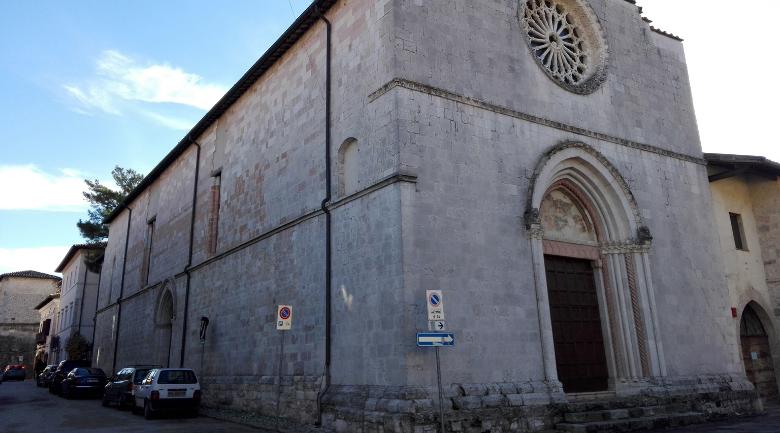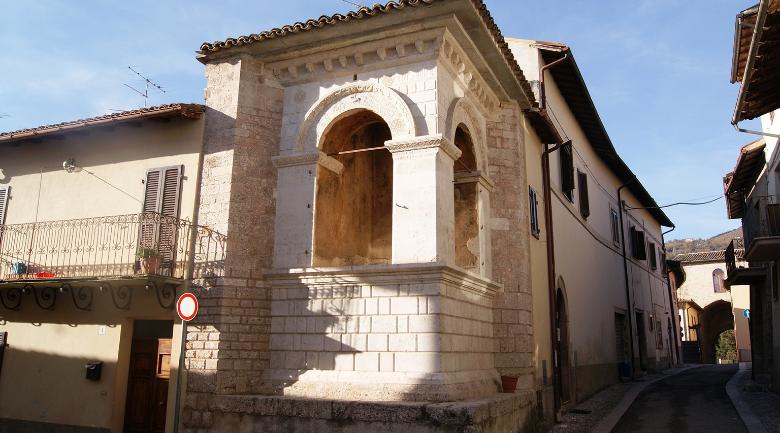The last work done on the church took place in the 1950s and revealed a 14th-century triumphal arch.
In 1570 a portico originally used as a roof over the cereals market was added to the right of the church.
The soft pink façade is bell-shaped and framed by two pilasters that end in pinnacles. It is divided in two parts by a frame that was originally decorated with multi-coloured inlays. The lower part is graced with a massive doorway under a lunette embellished with a group of sculptures depicting the
Madonna with Child and two adoring angels. One of the niches beside the lunette houses a statue of
St. Benedict and the other a statue of
St. Scholastica.
A large rose window encircled by the
symbols of the four Evangelists adorns the upper part of the façade.
The church has a Latin cross layout with a single nave and polygonal apse and was entirely redone in the 18th century. In the left wing of the transept is a large painting,
St. Benedict and Totila, by Filippo Napoletano (1621), while over the altar in the right wing there is a
Madonna and Norcia Saints done in the mid-1600s by the Roman painter Vincenzo Manetti. The apse is home to an impressive wooden choir from the 16th century that was taken from the church of the Annunziata.
The old crypt is under the nave and has three naves formed by pilasters crowned with rough capitals. The central nave has a lowered round vaulted ceiling and the more narrow side naves have cross vaulted ceilings. The left one ends in an absidiola which once belonged to a Roman public building dating to the first century C.E. that was eventually transformed into the primitive Oratory of St. Benedict. Some parts of the crypt walls are graced with
opus reticulatum brickwork, while others show traces of 14th century frescoes (left apse) where, according to tradition, the twins, Saints Benedict and Scholastica, were born. A small door leads to the adjacent archaeological site that encompasses the remains of two more rooms of the Roman building.
Note that the church sustained significant damage in the 2016 earthquake and is awaiting restoration.

































